Body Donation
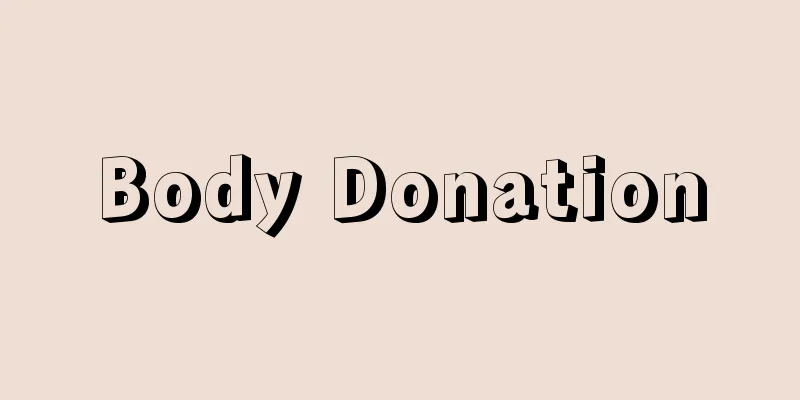
|
A corpse is a donation of a person's body to a medical or dental university after death, based on the will of the person before death, for use as an anatomical material for medical research and education through normal dissection. Normal dissection here refers to the dissection in which medical and dental students learn the normal structure of the human body through human dissection training. This is the most basic medical training for medical and dental students, and is an essential dissection training for them to correctly understand the structure of the human body and to make that knowledge their own. On the other hand, for medical and dental universities, which must fully implement this dissection training, securing human corpses is an important responsibility. The acquisition of corpses for human dissection has always been a difficult problem throughout the history of medicine, due to ideological and religious reasons, or because dissection itself was abhorrent. In the past, the corpses acquired by Japanese universities were mostly those of people who had no one to claim them after death, or those who were socially disadvantaged. However, in recent years, with the expansion of medical and dental universities, socio-economic development, increased quality of life, and improvements in social welfare, it has become extremely difficult to secure cadavers for dissection, which has become a major issue in medical education. On the one hand, people concerned about this current situation have promoted a body donation movement, in which people donate their bodies after their death, with the aim of improving medical education to produce good doctors. The word "body donation" is said to have been first used by Nagayasu Ryotaro, a social volunteer from Kasaoka City, Okayama Prefecture, in a publicity publication created for the body donation movement in October 1967 (Showa 42). There are already several dozen body donation groups across Japan, formed by anatomical volunteers who wish to donate their own bodies free of charge in order to train good doctors who are rich in humanity and ethics, with the main aim of donating their bodies, and this number is still increasing every year. Of these, the Shiragiku-kai in the Kanto region and the Furo-kai in the Kansai region have long histories of their own (the former was founded in 1955, the latter in 1962), and are large groups that continue to be active. In 1971, the National Association of Voluntary Anatomy was formed, linking these body donation groups with universities, and it contributes to anatomical education at medical and dental universities in each region. The idea of body donation has been widespread in Western developed countries such as the United States, the United Kingdom, Canada, and Germany for a long time, and the act of donating bodies has become a custom, with some countries even making body donation registration legal. For example, in the United States, mentally sound individuals over the age of 18 have the legal right to decide how their body will be disposed of while they are still alive. In Japan, the "Law on Body Donation for Medical and Dental Education" (Law No. 56 of 1983) was passed at the 58th ordinary Diet session in May 1983 and promulgated on May 25 of the same year. With this legalization of body donation, Japan achieved a law on body donation, following eye donation and kidney donation. The "idea of body donation" defined in this law is "the wish to donate one's body as an autopsy body for a postmortem dissection to clarify the normal structure of the body for medical or dental education." It also stipulates that the will of the donor must be respected. However, on the other hand, it also stipulates that an autopsy of the donor can be performed if "the deceased notifies the family that the deceased has expressed the will to donate the body in writing and the family does not object to the autopsy." Applications for body donations can be made through various body donation organizations, the aforementioned national association, and each medical and dental school, so please inquire. [Kazuyo Shimai] Source: Shogakukan Encyclopedia Nipponica About Encyclopedia Nipponica Information | Legend |
|
個人が生前からもっていた意思に基づいて、本人の死後、その遺体を、正常解剖を通じて行われる医学の研究・教育の解剖用教材として、医学・歯学に関する大学に寄贈することをいう。ここにいう正常解剖とは、医学生・歯学生が人体解剖実習によって人体の正常な構造を学ぶ解剖をいう。これは医学生・歯学生にとっては医学のもっとも基礎となる教育実習で、人体の構造を正確に理解し、その知識を自分のものとするためには不可欠の解剖実習である。一方、この解剖実習を完全に実施していかなければならない医学・歯学の大学にとっては、人間の解剖体を確保することが重要な責務となっている。人体解剖における解剖体の入手については、思想上や宗教上の理由、あるいは解剖そのものが忌み嫌われていたことなどから、医学の歴史のなかにおいても、つねに困難な問題となっていた。従来日本の大学で入手する解剖体の対象は、死後の引き取り手がない遺体、あるいは社会的にも恵まれない立場にあった人々の遺体が大部分であった。しかし、近年、医科・歯科の大学の増設、社会経済の発展と生活的な豊かさ、社会的福祉の向上充実などで、こうした解剖用遺体の確保がきわめて困難な状況となり、医学教育上の大きな問題となった。一方では、この現況を憂える人々によって、良医を育成すべき医学教育の充実を目ざして、自己の死後の遺体寄贈という献体運動が推進されてきた。この「献体」という語は、岡山県笠岡(かさおか)市出身の社会奉仕家、長安亮太郎(りょうたろう)が1967年(昭和42)10月に遺体寄贈運動のために作成された広報印刷物に使用したのが最初といわれる。 献体を主旨として、人間性と倫理性に富んだ良医を養成するために、自己の遺体を無償で提供しようとする解剖篤志家が結成している献体団体は、日本全国ですでに数十団体を数え、この数はなお年々更新されつつある。このうち、関東地区では「白菊会」、関西地区では「不老会」が創立の歴史も古く(前者は1955年、後者は62年発足)、活発な運動を続けている大きな団体といえる。また、1971年からはこうした献体団体と大学を結んだ「篤志解剖全国連合会」が結成され、各地区の医学・歯学の大学における解剖教育に貢献している。 献体の思想は、アメリカ、イギリス、カナダ、ドイツなどの欧米先進国では早くから普及しており、献体行為も慣習化し、国によっては献体登録が法制化されている。たとえば、アメリカでは、18歳以上の精神健全な個人なら、自己の意思によって自分の遺体の処置法を生前に決めておけるという法的権利が認められている。 日本では1983年5月の第58回通常国会において「医学及び歯学の教育のための献体に関する法律」(昭和58年法律第56号)が可決され、同年5月25日に公布された。この献体の法制化によって、日本では献眼、献腎(じん)(腎臓提供)に次いで、献体の法律が実現したことになる。この法律に定められた「献体の思想」とは、「自己の身体を死後医学又は歯学の教育として行われる身体の正常な構造を明らかにするための解剖の解剖体として提供することを希望することをいう」としている。そしてこの献体の意思は尊重されなければならない、と定めてある。しかしながら、一方では、「死亡した者が献体の意思を書面により表示している旨を遺族に通知し、遺族がその解剖を拒まない場合」には献体者の解剖ができる、との歯止めも決められている。 なお、献体の申し出は、各献体団体、前出の全国連合会のほか、各医学部・歯学部で取り扱っているので問い合わせればよい。 [嶋井和世] 出典 小学館 日本大百科全書(ニッポニカ)日本大百科全書(ニッポニカ)について 情報 | 凡例 |
Recommend
Altenberg, Peter
[Born] 1859 [Died] 1919 Austrian short story write...
Yu Dafu - Ikutafu
Chinese author. His given name was Wen, and his p...
Ueno Line
...A private railway with 91.5 km (1997) of lines...
Eucharistic procession - Seitai Gyoretsu
The term is a translation of German Fronleichnamsp...
Warburg, Otto Heinrich
Born: October 8, 1883, Freiburg Died: August 1, 19...
Fiocco, PA (English spelling) FioccoPA
...From the mid-16th century, Tylman Susato (c. 1...
George Richards Minot
American physician and hematologist. Born in Bost...
《Vengeance Senju no Sukedachi》
…First performed at the Hizenza Theater in April ...
Lure hook - Gijibari
A type of fishing bait made to resemble live bait....
Kurgan (English spelling)
The capital of Kurgan Oblast in central Russia. I...
Volume of wood
It is a term used to express the volume of wood, ...
Franz Joseph I
1830‐1916 Emperor of Austria. Reigned 1848-1916. H...
Chang-sheng-dian (English: Chang-sheng-dian)
A full-length Chinese drama written by Hongsheng o...
Semiconductor - Semiconductor
A material with a resistivity between that of a m...
Prunus lannesiana (English spelling) Prunuslannesiana
…[Hiroshi Aramata]. … *Some of the terminology th...

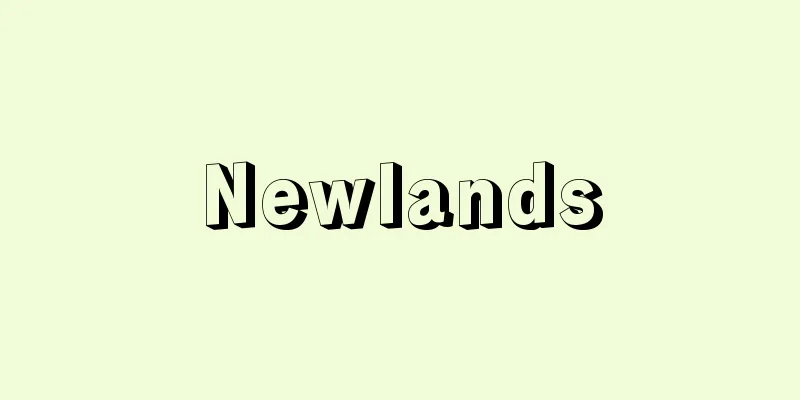

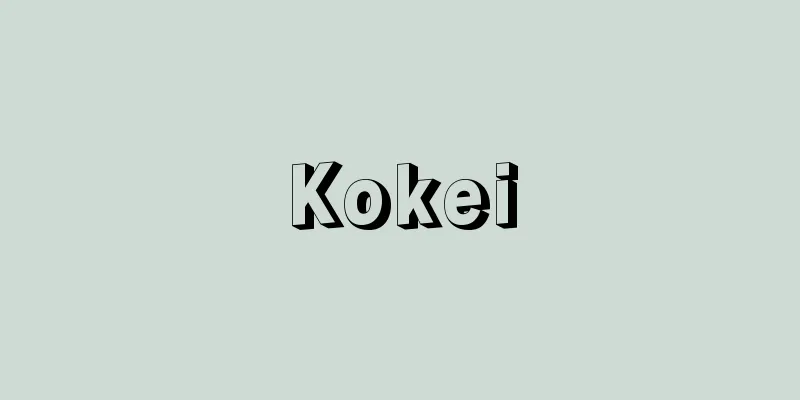

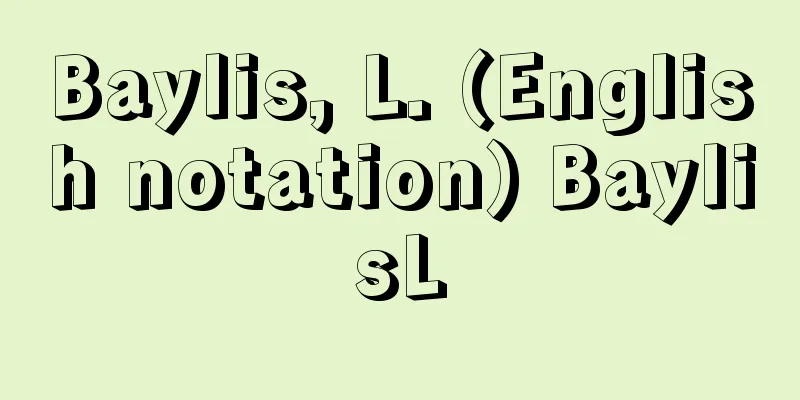
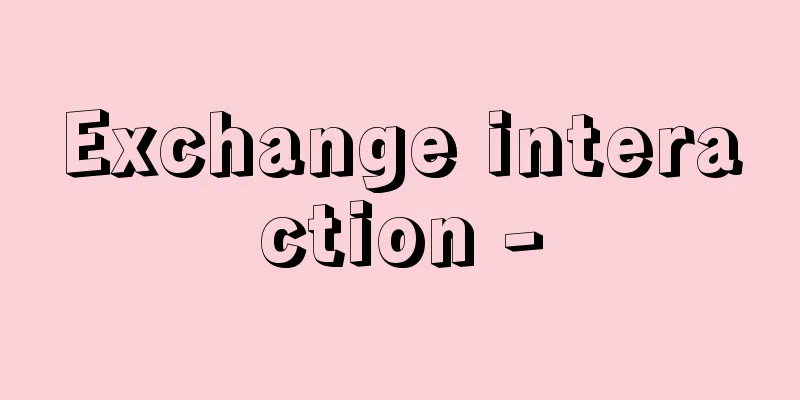

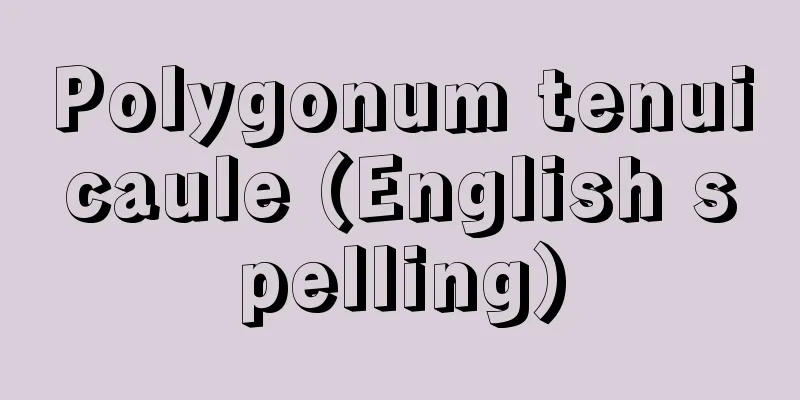
![Asahidake [Hot Spring] - Asahidake](/upload/images/67cf27277fdc8.webp)